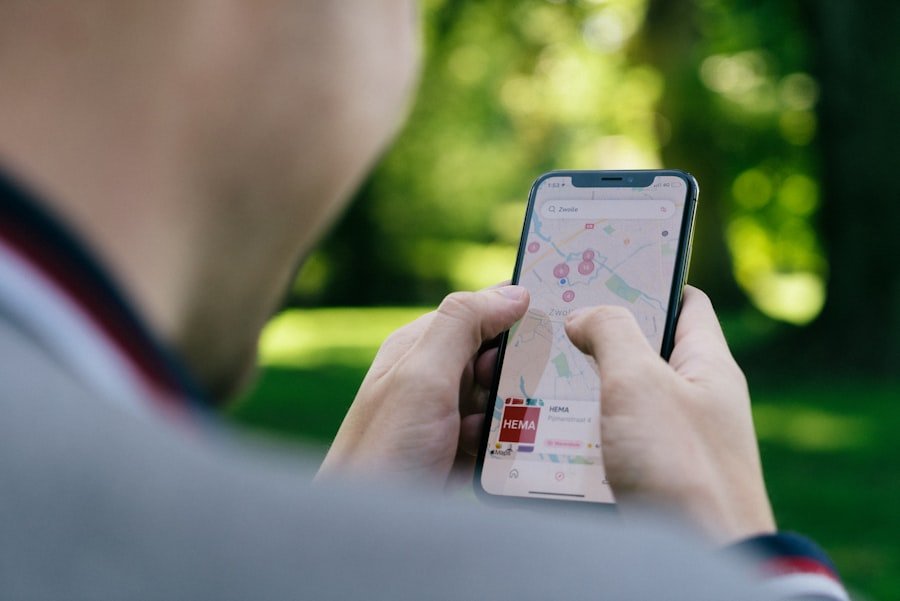The weight of an iPhone is more than just a number; it is a crucial aspect that influences user experience, portability, and even the perception of quality. When Apple first introduced the iPhone in 2007, it was celebrated not only for its groundbreaking technology but also for its sleek design and manageable weight. The original iPhone weighed approximately 135 grams, a figure that set the standard for future models.
As technology has advanced, the weight of iPhones has fluctuated, reflecting changes in design philosophy, materials used, and the incorporation of new features. Understanding the weight of your iPhone involves recognizing how it affects daily use and the overall user experience. Weight can significantly impact how users interact with their devices.
A lighter phone may be easier to carry around, especially for those who rely on their devices throughout the day. Conversely, a heavier phone might convey a sense of durability and premium quality. This perception can influence purchasing decisions, as consumers often associate weight with sturdiness.
Additionally, the weight of an iPhone can affect how it feels in hand during prolonged use, such as when texting or gaming. Therefore, understanding the weight of your iPhone is essential not only for practical reasons but also for appreciating the design choices that Apple has made over the years.
Key Takeaways
- The weight of your iPhone can impact its portability and user experience.
- Over the years, iPhone models have evolved in terms of weight, becoming lighter and more portable.
- The heaviest iPhone models are typically the Plus or Pro versions, due to larger screens and additional features.
- The weight of your iPhone can affect how easily you can carry it around and use it on the go.
- The materials used in the construction of iPhones play a significant role in determining their weight.
The Evolution of iPhone Weight
The evolution of iPhone weight is a fascinating journey that mirrors advancements in technology and design philosophy. From the original model to the latest iterations, Apple has experimented with various materials and designs that have influenced the overall heft of its devices. The original iPhone, weighing 135 grams, was relatively light compared to many smartphones available at the time.
However, as Apple introduced new features such as larger screens, enhanced cameras, and more powerful batteries, the weight began to increase. For instance, the iPhone 6 and 6 Plus marked a significant shift in design with their larger displays. The iPhone 6 weighed 129 grams, while the 6 Plus tipped the scales at 172 grams.
This increase was largely due to the larger screen size and additional components required to support enhanced functionality. As Apple continued to innovate, models like the iPhone X and later versions introduced materials such as glass backs and stainless steel frames, which also contributed to changes in weight. The iPhone 12 series saw a return to lighter designs with the introduction of aerospace-grade aluminum and ceramic shield glass, which provided durability without significantly increasing weight.
Comparing iPhone Models: Which is the Heaviest?

When comparing various iPhone models, it becomes evident that weight can vary significantly across generations and designs. The heaviest model to date is the iPhone 14 Pro Max, which weighs approximately 240 grams. This model’s heft can be attributed to its larger battery capacity, advanced camera system, and robust materials used in its construction.
In contrast, earlier models like the iPhone SE (2nd generation) weigh only about 148 grams, showcasing how design choices can lead to substantial differences in weight. The differences in weight among models can also be attributed to their intended use cases. For example, while the iPhone 14 Pro Max is designed for users who prioritize advanced photography and video capabilities, lighter models like the iPhone 13 mini cater to those who prefer compactness and ease of handling.
This diversity in weight allows consumers to choose a device that best fits their lifestyle and preferences. Additionally, understanding which model is heaviest can help potential buyers make informed decisions based on their needs for portability versus functionality.
The Impact of iPhone Weight on Portability
| iPhone Model | Weight (grams) | Portability Rating (1-10) |
|---|---|---|
| iPhone 12 Mini | 135 | 9 |
| iPhone 12 | 164 | 8 |
| iPhone 12 Pro | 189 | 7 |
| iPhone 12 Pro Max | 228 | 5 |
Portability is a critical factor for many smartphone users, particularly those who are constantly on the go. The weight of an iPhone plays a significant role in how easily it can be carried around throughout the day. A lighter device is generally more convenient for users who frequently travel or commute, as it can easily fit into pockets or small bags without causing discomfort.
For instance, individuals who rely on their phones for navigation or communication while walking or biking may prefer a lighter model that does not weigh them down. However, portability is not solely determined by weight; it also involves dimensions and ergonomics. A heavier phone may still be portable if it has a design that allows for comfortable handling.
For example, while the iPhone 14 Pro Max is one of the heaviest models available, its design features such as rounded edges and a well-balanced weight distribution make it easier to hold for extended periods. Users must consider both weight and design when evaluating portability to ensure they select a device that meets their needs without sacrificing comfort.
The Influence of iPhone Weight on User Experience
The user experience is profoundly affected by the weight of an iPhone. Heavier devices may evoke feelings of sturdiness and reliability, which can enhance user satisfaction. For instance, users often report that they feel more secure using a heavier phone because it seems less likely to break or malfunction compared to lighter alternatives.
This perception can lead to increased confidence in handling the device during everyday activities. Conversely, a lighter phone may enhance user experience by providing ease of use during prolonged interactions such as texting or gaming. Users who spend significant time on their devices may find that a lighter model reduces fatigue in their hands and wrists.
Additionally, lighter phones are often more comfortable to carry around during daily activities like running errands or exercising. Ultimately, the influence of weight on user experience is multifaceted; it encompasses both psychological perceptions of quality and practical considerations related to comfort and usability.
The Role of Materials in Determining iPhone Weight

Materials play a pivotal role in determining the weight of an iPhone. Apple has consistently utilized a combination of metals, glass, and plastics in its designs to achieve a balance between durability and weight. For example, aluminum has been a staple material for many iPhone models due to its lightweight properties and resistance to corrosion.
The use of aluminum not only contributes to a lighter device but also enhances its aesthetic appeal with a premium finish. In recent years, Apple has incorporated more advanced materials such as ceramic shield glass and stainless steel into its designs. While these materials offer improved durability and protection against drops and scratches, they also add weight to the device.
The decision to use heavier materials often reflects Apple’s commitment to quality and longevity in its products. As technology continues to evolve, it will be interesting to see how Apple balances material choices with user preferences for weight and portability.
The Future of iPhone Weight: Trends and Predictions
Looking ahead, trends in smartphone design suggest that weight will continue to be a significant consideration for manufacturers like Apple. As consumers increasingly prioritize portability alongside functionality, there may be a push towards lighter materials that do not compromise durability or performance. Innovations in material science could lead to new composites or alloys that provide strength without adding excessive weight.
Moreover, advancements in battery technology may also influence future iPhone weights. As battery efficiency improves, it may become possible to create thinner devices with longer battery life without significantly increasing weight. Additionally, as augmented reality (AR) and virtual reality (VR) technologies become more integrated into smartphones, manufacturers may need to find ways to incorporate these features without adding bulk or heaviness to devices.
The future of iPhone weight will likely reflect ongoing advancements in technology while responding to consumer demands for lightweight yet powerful devices.
Tips for Managing the Weight of Your iPhone
Managing the weight of your iPhone involves both practical strategies and mindful choices regarding accessories and usage habits. One effective way to mitigate the impact of weight is by selecting lightweight cases that provide adequate protection without adding unnecessary bulk. Many brands offer slim cases designed specifically for users who want to maintain portability while safeguarding their devices from drops and scratches.
Additionally, users can consider minimizing accessories that contribute to overall weight when carrying their phones. For instance, opting for wireless earbuds instead of bulky headphones can reduce the load when commuting or traveling. Furthermore, being mindful of apps running in the background can help optimize battery life, potentially allowing users to carry lighter power banks instead of heavier chargers.
Ultimately, understanding how to manage your iPhone’s weight can enhance your overall experience with the device while ensuring it remains a convenient companion in your daily life. By making informed choices about materials and accessories, users can enjoy all the benefits of their smartphones without feeling weighed down by them.
If you’re interested in maximizing the potential of glass bottle planters, you may also want to check out this article on maximizing tool organization with a pegboard. This article provides helpful tips and tricks for keeping your tools organized and easily accessible, just like how knowing the weight of an iPhone can help you better understand its features and capabilities. Both articles focus on optimizing the use of everyday items to enhance functionality and efficiency.
FAQs
What is the weight of an iPhone?
The weight of an iPhone varies depending on the model. For example, the iPhone 12 Pro weighs approximately 189 grams, while the iPhone 12 Pro Max weighs around 228 grams.
How does the weight of an iPhone compare to other smartphones?
The weight of an iPhone is comparable to many other smartphones on the market. It is important to note that the weight of a smartphone can vary significantly depending on the model and manufacturer.
Does the weight of an iPhone affect its portability?
The weight of an iPhone can affect its portability for some users. While lighter iPhones may be easier to carry and handle, heavier iPhones may feel more substantial and durable.
Are there any factors that contribute to the weight of an iPhone?
Several factors contribute to the weight of an iPhone, including the materials used in its construction, the size of the device, and the components and technology packed into it.
How does the weight of an iPhone impact its usability?
The weight of an iPhone can impact its usability for some users. Some may prefer a lighter device for ease of handling, while others may appreciate a heavier device for its perceived durability and premium feel.

